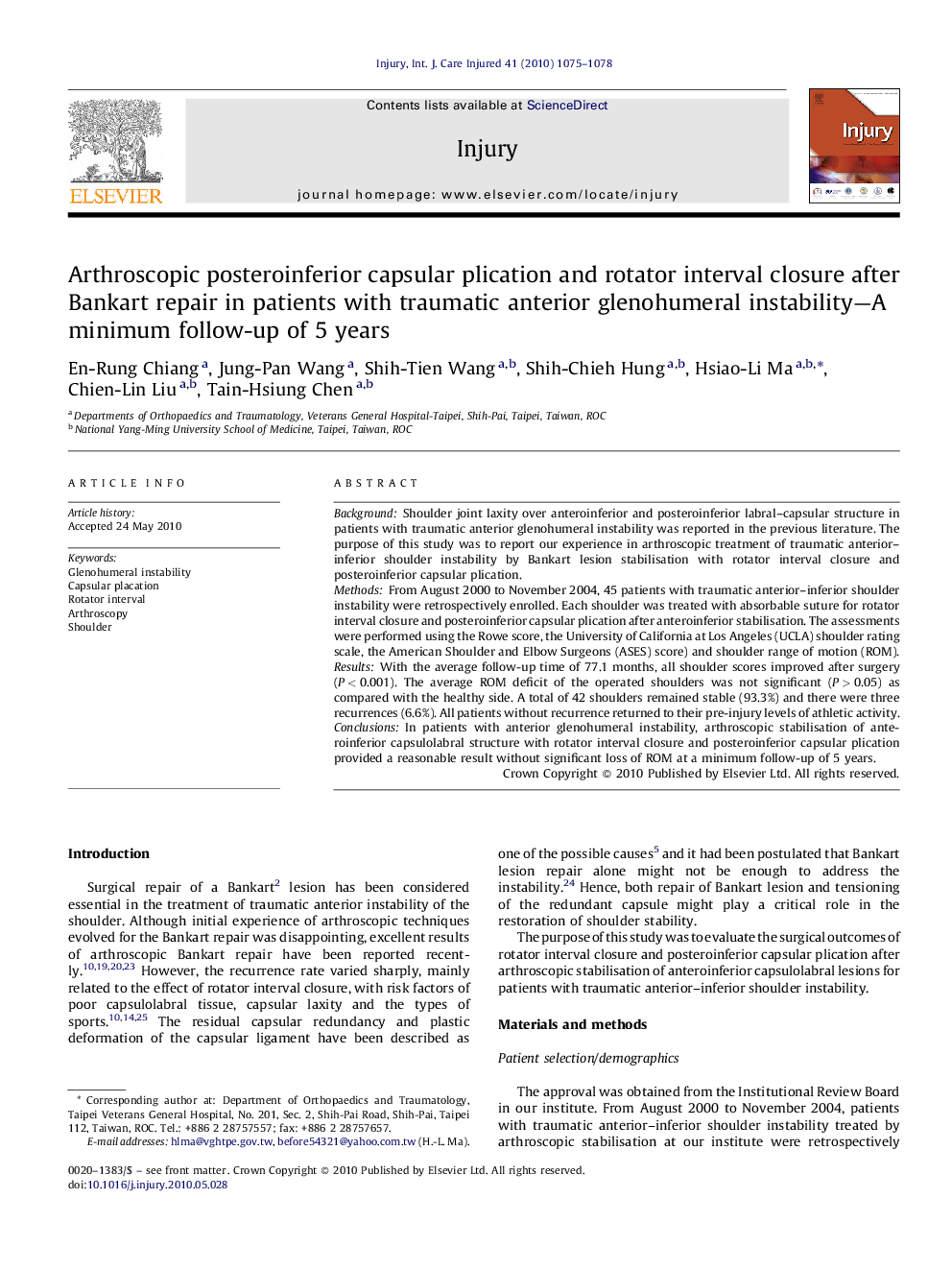| Article ID | Journal | Published Year | Pages | File Type |
|---|---|---|---|---|
| 3240026 | Injury | 2010 | 4 Pages |
BackgroundShoulder joint laxity over anteroinferior and posteroinferior labral–capsular structure in patients with traumatic anterior glenohumeral instability was reported in the previous literature. The purpose of this study was to report our experience in arthroscopic treatment of traumatic anterior–inferior shoulder instability by Bankart lesion stabilisation with rotator interval closure and posteroinferior capsular plication.MethodsFrom August 2000 to November 2004, 45 patients with traumatic anterior–inferior shoulder instability were retrospectively enrolled. Each shoulder was treated with absorbable suture for rotator interval closure and posteroinferior capsular plication after anteroinferior stabilisation. The assessments were performed using the Rowe score, the University of California at Los Angeles (UCLA) shoulder rating scale, the American Shoulder and Elbow Surgeons (ASES) score) and shoulder range of motion (ROM).ResultsWith the average follow-up time of 77.1 months, all shoulder scores improved after surgery (P < 0.001). The average ROM deficit of the operated shoulders was not significant (P > 0.05) as compared with the healthy side. A total of 42 shoulders remained stable (93.3%) and there were three recurrences (6.6%). All patients without recurrence returned to their pre-injury levels of athletic activity.ConclusionsIn patients with anterior glenohumeral instability, arthroscopic stabilisation of anteroinferior capsulolabral structure with rotator interval closure and posteroinferior capsular plication provided a reasonable result without significant loss of ROM at a minimum follow-up of 5 years.
